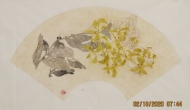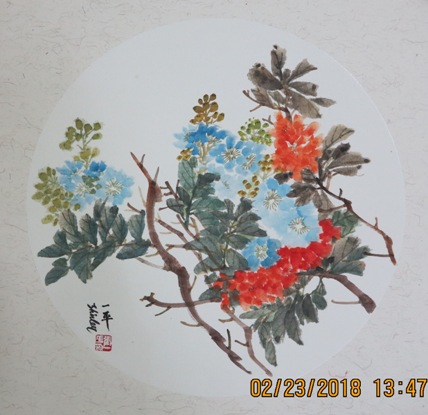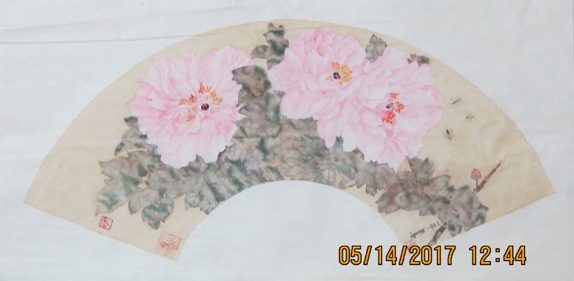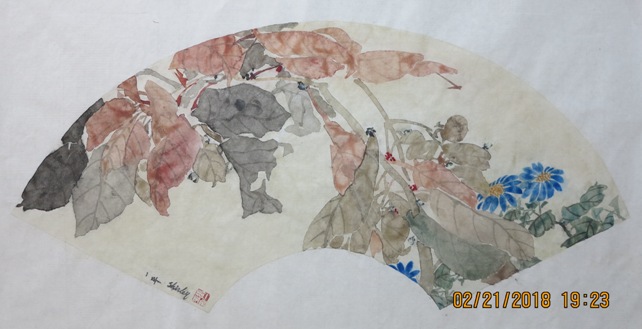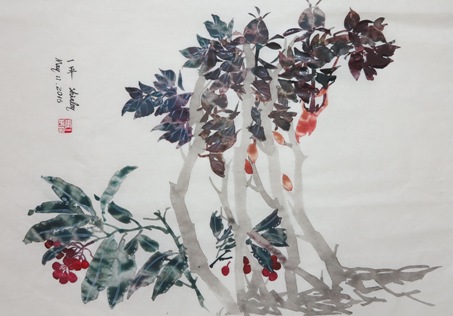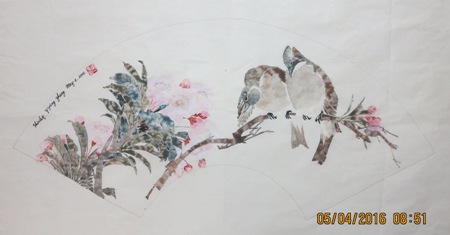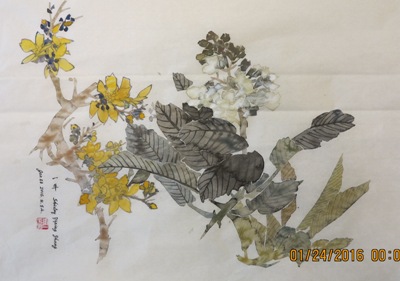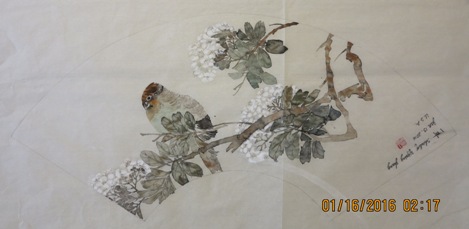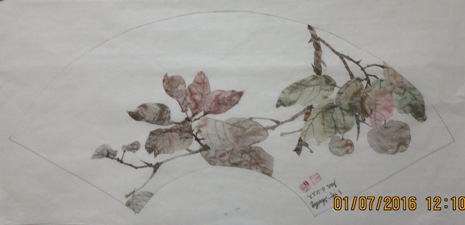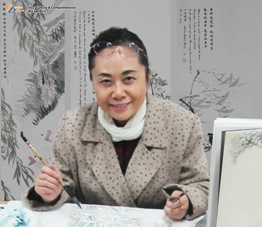
Mogu means "boneless" and a boneless painting does not have any obvious or unobvious contour ink lines as we often see in a Gongbi painting. Even if it has a line, it should be expressed by some different colors. In another words, instead of using ink lines, a Mogu painting uses colors or colored lines and colored gradation to create a painting.
The term "boneless" originated from the book "Lin Quan Gao Zhi" written by the famous painter and art theorist Guo Xi (1023- approximately 1085) in the Song Dynasty (960 - 1127).
Mogu Painting was created by a famous artist Zhang Zengyao (his birth and death years are unknown) in the Northern and Southern Dynasties (420-589).
In the Five Dynasties (907-960), Huang Quan (approximately 903-965) significantly developed it to paint trees and flowers.
In the Tang Dynasty (618 - 917), Yang Sheng (his birth and death years are unknown) mastered and developed it in landscape field.
In Ming Dynasty (1368 to 1644), Xu Wei (1521-1593) combined the Mogu style into his famous “Splash ink freehand brushwork”
In Qing Dynasty (1644-1911), Yun Shouping /Yun Nantian(1633—1690) made it famous and Ren Bonian (1840-1895), Wu Changshuo (1844 —1927) developed it forward.
Mogu painting has been a small stream in Chinese painting history since it was created, but, there are no many famous Mogu paintings to be passed down.
I started to touch Mugo painting in March 2011 at China Central Academy of Fine Arts.
According to my instructor:
Chinese Mogu Painting uses the methods of Chinese Xieyi paintings, to meet the result of Chinese Gongbi paintings. Therefore, it is a painting that lies between Chinese Gongbi and Xieyi.
-- "Mogu" in Chinese is means "There is no Bone". Since ink line is the Bone of Chinese painting, there is no bone, means artists don’t paint a Chinese Mogu Painting with ink lines, but create a painting with colors or colored line directly.
-- Instead of using ink line, Chinese Mogu uses the colors directly.
Here are some of my Chinese Mogu paintings I did in both of Chinese National Academy of Arts and the Central Academy of Fine Arts and I left the schools. I do hope to bring you a big smile and get your comments or guidance.
If you have any questions, comments or suggestions, you are welcome to write to info@ebridge.cn.
--Shirley

